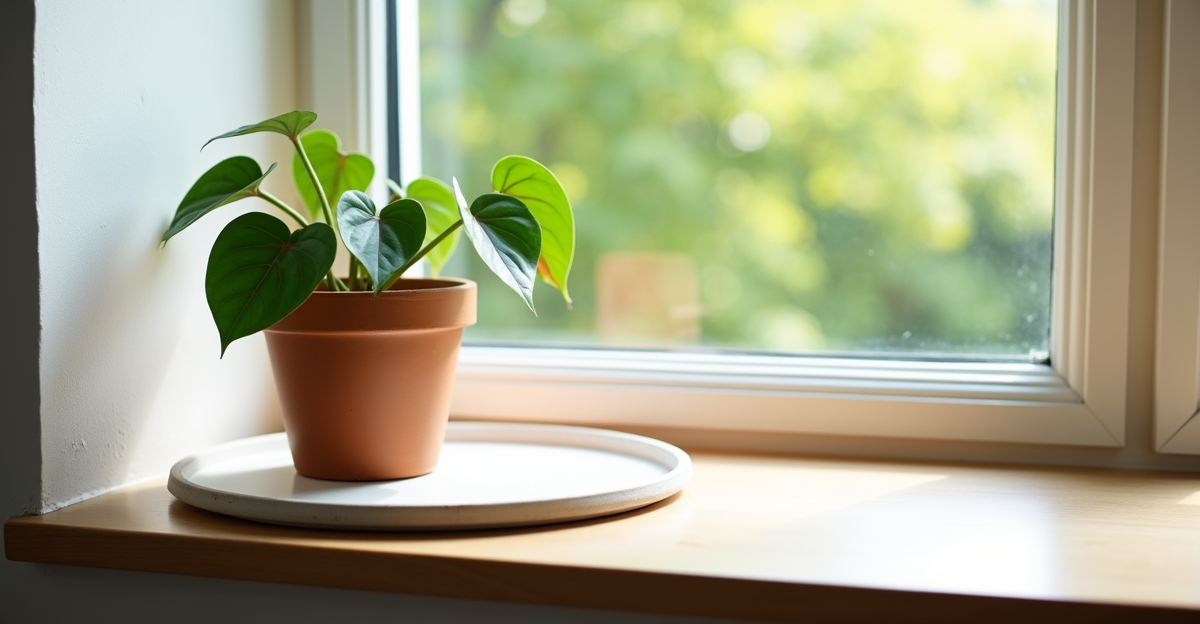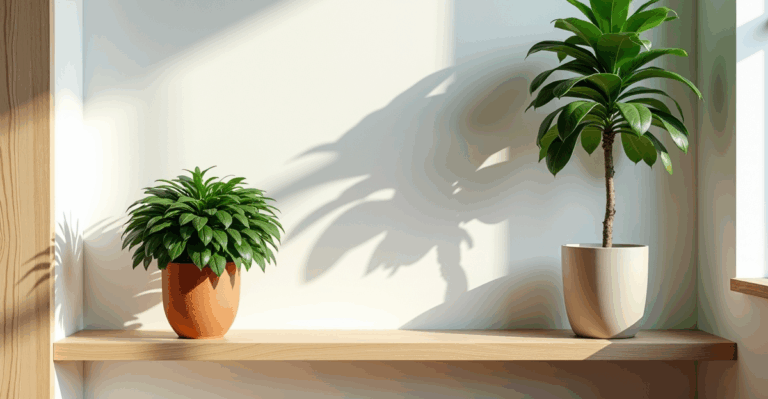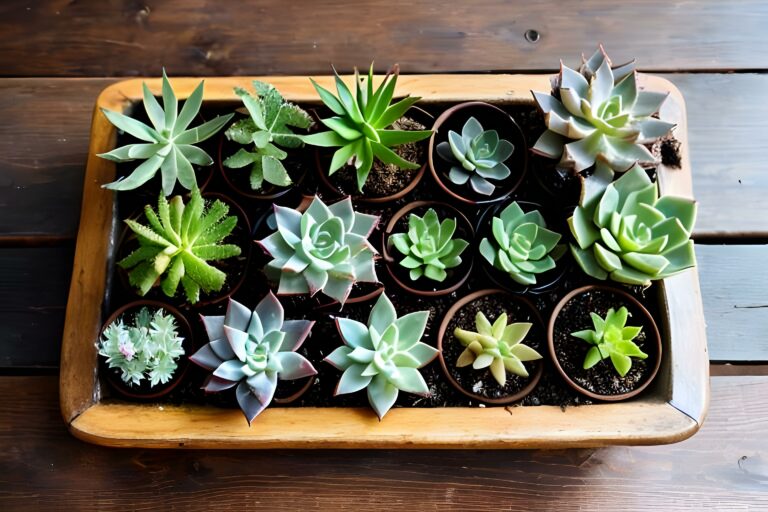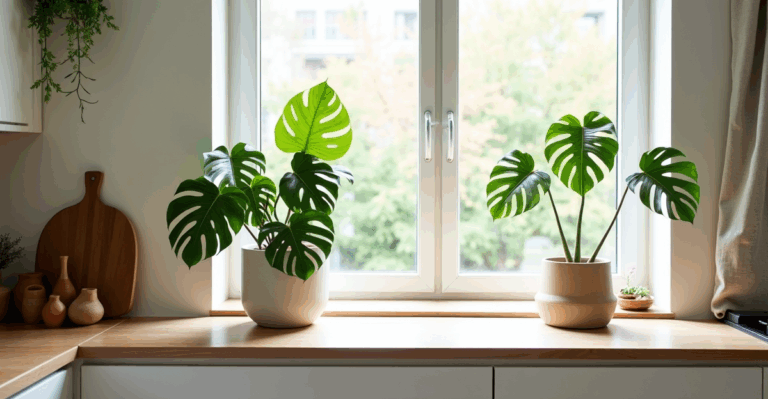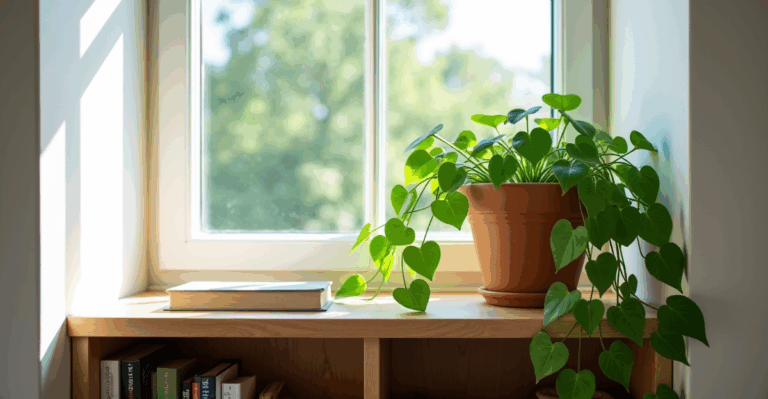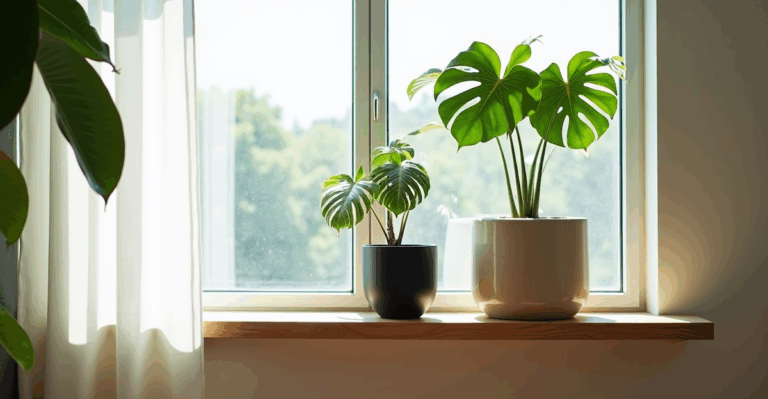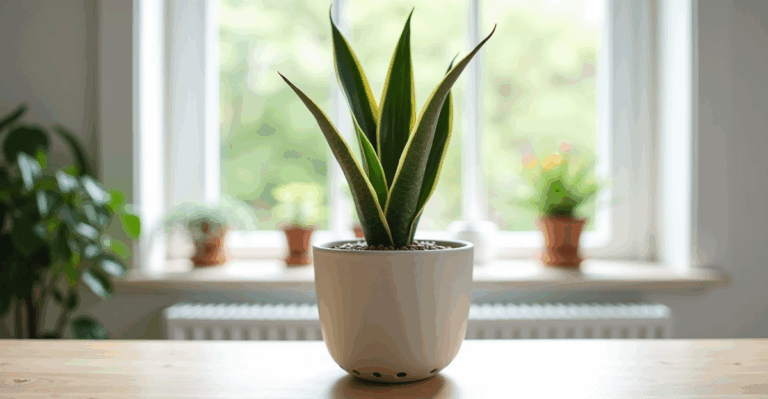Peperomia in a Drafty East Window? Here’s How to Make It Thrive (Without Moving It)
You’ve finally found the perfect spot: a sunny east-facing window, dappled light for most of the morning, just the right amount of brightness for your Peperomia without the harsh afternoon burn. You place it on the sill, ready to enjoy its heart-shaped leaves and vibrant colors. But then… whoosh. A sudden draft from the window’s seal blows across the plant, chilling the soil and drying out the leaves. You move it back to the table, only to see it start to droop in the lower light. It’s a common loop: a great light spot ruined by an unavoidable draft. We’ve been there too. The good news? You don’t have to choose between perfect light and a drafty window. You just need to work with the draft, not against it.
Peperomias are champions of bright, indirect light – which east windows provide perfectly in the morning. They’re also not fans of constant cold air blasts. But here’s the nuance most guides miss: that draft isn’t inherently bad; it’s the uncontrolled moisture loss from the cold air hitting the soil and leaves that causes stress. The solution isn’t just moving the plant (which often leads to lower light), but managing the microclimate around it at that window. Let’s break down how to make that east window spot your Peperomia’s new favorite home.
Fix Draft-Induced Stress Without Moving Your Plant
Most people react to a draft by moving the plant away from the window or closing the window. But that often means trading bright light for gloomy shadow, which Peperomias also hate. Instead, use the draft strategically to improve airflow without drying out the roots. The key is creating a buffer zone between the cold air and the plant’s soil and leaves.
- The Buffer Trick: Place a shallow, wide tray or a small, flat stone under the pot, directly on the windowsill. This creates a small barrier, slowing the direct cold air flow to the pot while still allowing the gentle breezes to circulate above the plant. It’s like giving your plant a tiny windbreak. Avoid using a full-sized cachepot here – it traps moisture and can worsen root issues. Stick to a simple, low-profile barrier.
- Why It Works: The buffer stops the coldest air from hitting the soil surface directly, preventing rapid temperature drops that cause moisture loss and root stress. The plant still gets the gentle, cool air it needs for healthy transpiration (the process of releasing water vapor), just not the damaging blast.
Our Experience: A customer, Maya, had a stunning Peperomia ‘Raindrop’ drooping at her east window. The draft was clear from the loose seal. Instead of moving it, she placed a small, flat ceramic tile (about 3″x4″) directly on the sill under the pot. Within a week, the leaves stopped curling, and new growth appeared. The draft was still there, but the plant’s microclimate was stable.
Optimize Watering for Drafty Windows & Soil Types
Drafty conditions accelerate evaporation at the soil surface, making it seem like the soil dries out faster. But the roots might still be cool and moist below the surface. Overwatering is a huge risk here – a common mistake when you think the plant needs more water due to surface dryness.
- The Watering Rule: Forget the surface. Always check 2-3 inches deep with your finger. If it feels cool and slightly damp at that depth, wait. Drafts make the top layer dry quickly, but the roots need consistent, not constant, moisture. For Peperomias, this usually means watering every 1-2 weeks in spring/summer, longer in winter. Never water on a schedule.
- Soil Matters: If you’re using a standard mix (like a 50/50 blend of potting mix and perlite), the draft helps the top layer dry faster, aligning well with the watering rule. If using LECA (clay pebbles) or PON (pumice), the draft can help prevent surface stagnation but still requires checking the bottom of the reservoir – the top layer might look dry while the reservoir is full. Flush LECA systems monthly to prevent mineral buildup from hard water, which drafty air can sometimes concentrate.
Real Talk: I had a Peperomia ‘Watermelon’ in a terra cotta pot on a slightly drafty east sill last winter. I kept checking the top inch and watering too often. It developed root rot. After switching to checking 3 inches deep and only watering when it felt cool and damp below the surface, it bounced back. Drafts don’t mean “water more,” they mean “check deeper.”
Seasonal Shifts: Why Your Draft Gets Stronger (and What to Do)
Drafts aren’t constant. In colder months, windows cool down significantly, making drafts much more pronounced. In summer, the draft might be less severe but the light intensity increases – you might need to adjust the buffer or add a sheer curtain for the hottest part of the morning.
- Winter Strategy: Add a slightly thicker buffer. A small, smooth ceramic coaster (not porous) under the pot, or even a tiny piece of cork (like a bottle stopper), can add a bit more insulation without trapping water. Ensure the plant isn’t touching the cold window glass – a small gap (1-2 inches) between the pot and glass is ideal. The buffer on the sill works better than moving the plant away from the glass.
- Summer Strategy: The draft might feel less cold but the light intensity is higher. If the plant starts showing slight sunburn (pale, scorched patches), a very light sheer curtain on the window only during the peak 10 AM-12 PM sun is sufficient. Avoid heavy curtains that block the beneficial morning light. The draft itself usually won’t cause sunburn.
Why Your Current Planter Might Be Failing (And What to Use Instead)
Many common planters worsen the draft problem:
* Terra Cotta: Breathable but too porous. Drafts pull moisture out of the soil too fast, making the top layer dry instantly while roots stay damp – leading to overwatering stress or root rot.
* Plastic Pots (especially deep, narrow ones): Trap cool air against the roots, making the soil feel colder longer. Drafts hitting the surface make the top dry, but the cold roots stay wet, increasing rot risk.
* Cachepots with Liners: Trap moisture and cold air around the pot, creating a soggy microclimate that drafty windows exacerbate.
The Ideal Setup for Drafty East Windows:
1. A pot that’s not too porous: Choose a lightweight, non-porous planter (like glazed ceramic, concrete, or our 3D-printed options) that doesn’t wick moisture away from the soil surface too aggressively. This helps maintain a more stable soil moisture level despite the draft.
2. A low, wide base: As mentioned, a shallow tray or flat stone under the pot acts as the buffer. This is easier to integrate with a low-profile pot than a tall, heavy pot.
3. Surface Protection: Place the pot on the buffer (tray/stone), not in it. This keeps the buffer clear of water and prevents the pot from sitting in pooled moisture.
Edge Case Alert: If your draft is coming from a crack in the window frame and hitting the pot directly (not just the sill), moving the pot 6-12 inches back from the edge of the sill (but still within the bright light zone) is often the simplest fix. A buffer on the sill alone won’t help if the draft is hitting the pot itself.
Styling Your Peperomia in a Drafty East Spot (Without Compromising Care)
This window is prime real estate for styling! The morning light makes Peperomias’ colors pop. Use the draft-friendly setup to create a cohesive display:
- The Shelf Solution: If your sill is narrow, place the pot on a small, wide shelf just in front of the window, slightly offset from the draft path (e.g., 4 inches in from the window edge). This keeps the plant in the light but away from the direct draft. Add a second, identical pot of another low-light plant (like a small ZZ or Pothos) on the same shelf for balance.
- The Hanging Rail Trick: Install a simple, low-hanging rail above the window (not directly over the sill), then hang a small, lightweight pot (like our 3D-printed options) from it. The pot hangs above the draft zone and still gets the morning light. The rail creates a clean line that hides the cord if you add a subtle LED strip under the rail (not behind the plant).
- The Minimalist Look: Place your Peperomia directly on the sill with the buffer (tray/stone), and let its natural form be the statement. Pair it with a single, uncluttered succulent in a matching pot (e.g., a small Echeveria) on the floor below the window. The draft is managed, the light is perfect, and the styling is effortless.
The Bottom Line for Peperomia in Drafty East Windows
You don’t need to sacrifice the perfect light for a draft-free zone. The key is understanding that the draft itself isn’t the enemy; it’s the uncontrolled moisture loss it causes that stresses your plant. By adding a simple buffer under the pot, checking soil moisture deeply before watering, choosing the right pot (non-porous, low-profile), and making minor seasonal adjustments, you create a stable microclimate. This allows your Peperomia to enjoy the vibrant morning light it craves without the cold shock or drying out.
It’s about working with the space you have, not fighting it. The east window is a gift for your Peperomia – the gentle, consistent morning light is ideal. A little clever setup turns the potential problem of a draft into a manageable, even beneficial, part of your plant’s healthy environment. Your plant will reward you with lush, vibrant growth and a happy, stress-free vibe.
When you’re ready to grow your setup, explore our 3D-printed planters.

